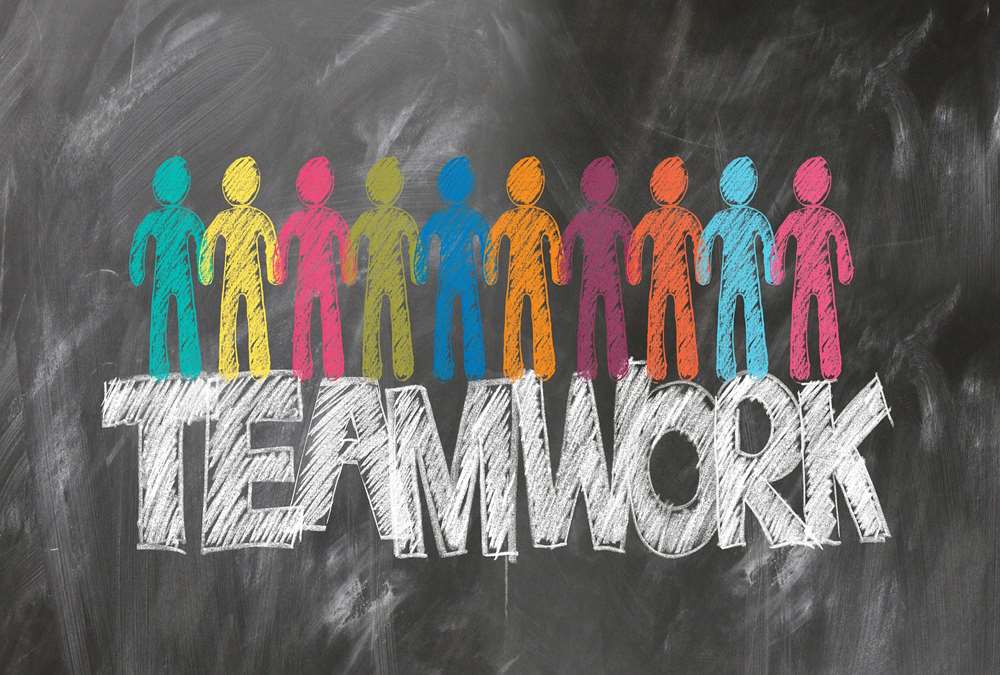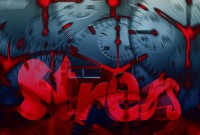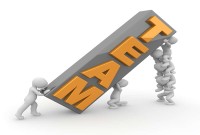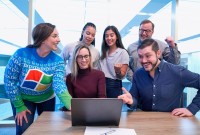- Home
- Business Processes
- Industry Knowledge
- Aerospace Industry
- Automotive Industry
- Banking Domain
- BFSI Industry
- Consumer/ FMCG Industry
- Chemicals Industry
- Engineering & Construction
- Energy Industry
- Education Domain
- Finance Domain
- Hospitality Domain
- Healthcare Industry
- Insurance Domain
- Retail Industry
- Travel and Tourism Domain
- Telecom Industry
- Leadership Skills
- eLearning
- Home
- Leadership Skills
- Team Leadership
- Defining Team and Teamwork
Defining Team and Teamwork
Teams are part of the modern organizational culture. Whether you are a team leader or a team member, having a better understanding of how teams work, and being able to identify where the team is in the process, is a critical part of ensuring the team is ultimately successful. Start with the basics and understand what a team is and what role they play in an organization.
Why We Need Teams?
If you visit an organization, you will find that most of the activities of the organization are performed by a group of persons. Most of the work in organizations is done in teams. In an organization, activities are arranged in such a way that requires collective contribution. In fact, new organizations can be described as composed of teams.
In modern organizations, individuals are required to work in different types of teams. Even though individuals are important, their effectiveness depends, to a large extent, on the teams of which they are members. Every individual contributes to the achievement of a common goal. The individuals interact, collaborate, coordinate, and influence among the members. Thus, most of the time individuals work in a team.
Difference Between Groups and Teams:
A team consists of individuals. However, the collection of individuals in a place may be only a crowd. When individuals come together for certain tasks, then we have the formation of a group. A group is not necessarily a team. A group can have individuals with varied interests, attitude as well as thought processes. It is not necessary that the group members would have a common objective or a common goal to achieve. Let’s define these terms.
What is a Group?
The main function of a group is to exchange task-related information and discuss task-related issues. The accountability in the group Building Roles and Teams remains of the individual. Each individual brings his/her competencies as well as the relevant information related to the task. Thus the group can be defined as a collection of individuals working in face-to-face relationships to share information and resources for a task to be achieved.
Group V/s Team:
The team is qualitatively different from the group in several ways. The team functions almost like an individual. In other words, the team is accountable for results; collective responsibility is taken. There is mutuality and complementarity of the members of the team. The most important characteristics of a team are that it creates synergy, i.e., the performance of the team is more than the collective performance of the individual members. Hence, A team can be defined as a group of individuals working in a face-to-face relationship for a common goal, having collective accountability for the outcome of its effort.
Difference between Groups and Teams:
|
Attribute |
Group / Work-Group |
Team |
|
Purpose |
Same as that of Organization |
Teams could be created for a specific purpose, distinct from that of the organization |
|
Work Products |
Individual |
Collective |
|
Process |
Discuss, decide, delegate |
Discuss, decide, do |
|
Leadership |
A single leader |
Shared Leadership |
|
Meeting |
Efficient |
Open, Problem Solving |
|
Accountability |
Individual |
Individual and Mutual |
|
Performance |
Performance typically depends on the work of individual members. |
Performance depends on both individual contributions and collective work products- the joint outcome of team members working together |
|
Responsibility |
Members of groups do not take responsibility for any results other than their own, although they do pool their resources to attain a goal |
Each team member shares responsibility for the team outcome. |
|
Goal |
Groups share a common interest goal |
Teams share a common interest goal plus a common commitment to purpose which supplies a source of meaning and emotional energy to the activities performed. |
|
Evaluation |
Indirect (Eg. Financial) |
Direct (Collective Work Product) |
Definition - What is a Team?
A team may be defined as a group of two or more people who interact and influence the members for the achievement of a common goal. A team is a group of individuals, all working together for a common purpose. The individuals comprising a team ideally should have common goals; common objectives and they should be compatible with each other.
"A team is a small number of people with complementary skills who are committed to a common purpose, performance goals, and approach for which they are mutually accountable." - Katzenbach and Smith, 1993
“A team is groups of two or more people who interact and influence each other, are mutually accountable for achieving common objectives, and perceive themselves as a social entity within an organization.” - Steven and Mary Ann Von
A team is defined as a reasonably small group of people, who:
- Are committed to a common purpose
- Hold themselves mutually accountable for achieving a clear and identifiable set of goals
- Mayor may not have complementary skills
Characteristics of a Team:
Based on this definition given above, the characteristics of the teams may be elaborated as under:
- A group of two or more persons
- Having regular interactions among members
- Ability to influence the behavior of team members
- Members are mutually accountable
- Members are interdependent
- They together form a social entity
- Work towards the achievement of common goal Each member’s contribution is as important as any other member’s contribution
- Congruence between the achievement of individual goals and that of the team goal
The frequency of interactions, influence, and the nature of tasks may determine the formation of a group, i.e., long-term, short-term, formal, informal, etc. Many new managers and supervisors reading this article will be taking over the management of an existing team rather than bringing together a new one. However, understanding these basics will help you put together your ideal team if you had the opportunity. This will help you fully understand the issues you may face.
Each individual is a contributor and brings a set of skills and knowledge to the organization. When we bring those individuals together, there is a wider range of skills and experience, and as a leader, you are able to come up with even better solutions.
Related Links
You May Also Like
-
This style is characterized by leaders making decisions for others and expecting followers to follow instructions. The directive leader is adept at giving instructions, setting expectations, and establishing timelines and performance standards. However, it is possible for the same leaders to display both directive and supportive behavior as per the demands of the situation.
-
Collaborative leadership is all about collaborative problem-solving and decision-making or can also be defined as the leadership of a collaborative effort. . The term started to appear in the mid-1990s in response to the formation of long term public-private partnerships to rebuild public infrastructure. Learn how you can use principles of collaborative leadership to enhance your leadership skills for being an effective leader.
-
Teams are certainly very relevant and important elements in today’s high-performance organization but the important thing to remember as a leader is that we can’t simply rely on putting highly effective individuals together to make a highly effective team. Empowerment increases the effectiveness of the team and drives many intangible benefits both for the organization and the employees.
-
Stress is an essential part of our life. No one can live without stress. Stress can be beneficial as well as harmful. Stress as a positive influence adds excitement and hope while as a negative influence it can result in destructive feelings, anger, and depression. Although the general orientation to stress is to consider unfavorable outcomes, yet one must have observed that stress experiences may also facilitate the development of effective and varied coping behavior, increased personal resources, and lead to a sense of competence in development. Stress at a moderate level is not only inevitable but may be useful for physical and mental well-being.
-
Team Foundation in Forming Stage
This is the first stage of team development. This is the stage when the foundation of the team is laid. During the Forming stage, team members have a high dependence on their leader for guidance. Learn the practical strategies you can use during this stage to help your team develop into a highly effective performing team.
-
Laissez-faire is a style of leadership that affords the group members a great deal of independence. Tasks are delegated to the group members and they are responsible to see the project through to fruition. Research has shown that this style of leadership leads to the lowest levels of productivity. This article explains this style and covers the implications of having a hands-off approach and the situations where this style could be effective.
-
Recognizing Stress & its Sources
As an individual, you almost certainly know what stress feels like. Stressors are events or situations to which people must adjust. Stressors may be physical or psychological in nature. The level of severity of stress is determined not merely by exposure but the intensity, duration, and frequency of stressors. The sources of stress are many. They arise from multiple areas both with the individual and from the environment.
-
Generating Ideas using Brainstorming
The brainstorming technique was developed by Alex F. Osborn in 1957 and brainstorming means where a team of members generates a large amount of alternative fruitful ideas on a specific problem without any criticism and then evaluates each idea in terms of their pros and cons. Brainstorming techniques fall into four broad categories: visioning, exploring, modifying, and experimenting.
-
Change & Culture of Innovation
Predicting the future is a tricky business but managers need to have a future perspective in order to take business advantage and remain competitive. They need to drive and introduce constructive change to the business of the enterprise. The first step to creativity and innovation is to drive a culture of Innovation. Managers need to focus on developing future mindset all the time to keep pace with the unfolding future.
-
Evidence of the medically damaging symptoms of work stress necessitates applying the treatment of stress management. Stress management is increasingly drawing the attention to the management experts not only as a remedial measure but also as a way to resource management. If the workplace can be made a little more lovable the increase in the achievement of the organization may be much time more. If group stress can be removed by introducing group discussions and recreational facilities a long-lasting team spirit may get developed.
Explore Our Free Training Articles or
Sign Up to Start With Our eLearning Courses

About Us
Learning
© 2023 TechnoFunc, All Rights Reserved










